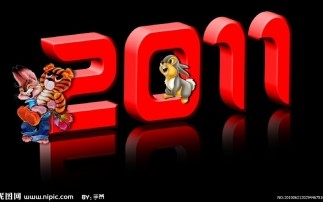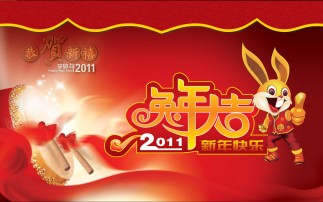
the lantern festival falls on the 15th day of the 1st lunar month, usually in february or march in the gregorian calendar. the festival marks the end of the celebrations of the chinese new year.
chinese started to celebrate the lantern festival from the han dynasty (206 bc - 221 ad). like most other chinese festivals, there is also a story behind the festival. it is also believed that the festival has taoist origins.
this day's important activity is watching lanterns. lanterns of various shapes and sizes are hung in the streets, attracting countless visitors. children will hold self-made or bought lanterns to stroll with on the streets, extremely excited. "guessing lantern riddles"is an essential part of the festival. lantern owners write riddles on a piece of paper and post them on the lanterns. if visitors have right solutions to the riddles, they will get a little gift.
in the daytime of the festival, performances such as a dragon lantern dance, a lion dance, a land boat dance, a yangge dance, walking on stilts and beating drums while dancing will be staged.on the night, except for magnificent lanterns, fireworks form a beautiful scene. most families spare some fireworks from the spring festival and let them off in the lantern festival. some local governments will even organize a fireworks party. on the night when the first full moon enters the new year, people become really intoxicated by the imposing fireworks and bright moon in the sky.
people will eat yuanxiao, or rice dumplings, on this day. yuanxiao (glutinous rice ball) or tangyuan is the special food for the lantern festival. it is believed that yuanxiao is named after a palace maid, yuanxiao, of emperor wu di of the han dynasty. it is made of glutinous rice flour with rose petals, sesame, bean paste, jujube paste, walnut meat, dried fruit, sugar and edible oil as filling. tangyuan can be boiled, fried or steamed. it tastes sweet and delicious. what's more, tangyuan in chinese has a similar pronunciation with "tuanyuan", meaning reunion. so people eat them to denote union, harmony and happiness for the family. you can find yuanxiao in oriental food stores. if you enjoy cooking, here is a recipe of yuanxiao for you.
ingredients
500 g sticky rice flour
200g butter
200g black sesame powder
250g sugar
1 tsp wine
methods
1. mix the butter with sesame powder, sugar and wine together. you need to heat a little bit. make small balls about 0.3-0.4 oz (10 g)each.
2. take 1/2 cup of sticky rice flour. add water into the flour and make a flatten dough. cook it in boiled water and take out until done. let it cool down. then put it in the rest of the sticky rice flour. add water and knead until the dough is smooth.
3. make the dough into small pieces about 0.3-0.4 oz (10 g) each. make it like a ball using hands first and then make a hole in the ball like a snail. put the sesame ball into it and close it up.
4. cook them in boiled water. make sure to keep stirring in one direction while cooking. when they float on the water, continue to boil for about one minute using less heat.
参考译文:
每年农历的正月十五日是元宵节,常常是在西历(阳历)的2月或3月。元宵节的到来也标志着春节的结束。
元宵节的传统可以追溯到西汉时期,像其他的传统节日一样,关于元宵节也有一个美丽的传说。据说,它还与与道家的传统有关。
元宵节的重要活动是赏花灯。街上挂着各式各样美丽的花灯,吸引着无数参观者。孩子们提着自制的或买来的灯笼走街串巷,非常高兴。猜灯谜也是元宵节的一项重要活动。花灯的主人将谜面写在纸上,然后贴在灯笼上。如果赏花灯的人猜中谜底,就会得到小礼物。
元宵节的白天有耍龙灯、耍狮子、划旱船、扭秧歌、踩高跷、打太平鼓等表演。到了夜晚,除了五颜六色的漂亮花灯之外,还有艳丽多姿的烟火。大多数家庭会在春节时留下一些烟花,等到元宵节这天燃放,而一些地方政府也会举办烟花大会。当新年的第一个月圆之夜来临时,人们都陶醉在这令人难忘的烟花与天空皎洁的明月中。
人们在元宵节这天要吃元宵。元宵(黏米团子)或者叫做汤圆,相传为汉武帝时宫中一位宫女的名字。(注:她长年幽于宫中,思念父母,终日以泪洗面。大臣东方朔决心帮助她,于是对汉武帝谎称,火神奉玉帝之命于正月十五火烧长安,要逃过动难,唯一的办法是让“元宵姑娘” 在正月十五这天做很多火神爱吃的汤圆,并由全体臣民张灯供奉。武帝准凑,“元宵姑娘”终于见到家人。此后,便形成了元宵节。)。它是由糯米制成,用玫瑰花瓣、芝麻、豆沙、枣泥、核桃、干果、糖及食用油作馅。汤圆可以煮、炸、或蒸着吃,香甜可口。而且,汤圆与"团圆"字音相近,取团圆之意,因而人们在元宵节吃汤圆,象征全家人团团圆圆、和睦幸福。在一般的中国店铺都可以买到。如果您喜欢烹饪,这里就向您介绍一个做元宵的食谱:
原料:
500克黏糯米面
200克黄油
200克黑芝麻粉
250克白糖
一茶匙酒
方法:
1、将黄油、黑芝麻粉、白糖和酒混合,加热一会,搓成10克左右的小团。
2、取约100克黏糯米面,加水和成面团,放在开水中煮熟。晾凉后加入到剩余的糯米面中,揉捏到平滑。
3、将面团分成10克左右的小团,用手搓成球形,再在中间刺出一个蜗形,再把之前做好的芝麻馅填充进去。
4、在开水中煮熟,在煮的过程中要始终顺着一个方向搅拌,汤圆全部浮起在水面后小火再煮一分钟,即可。




